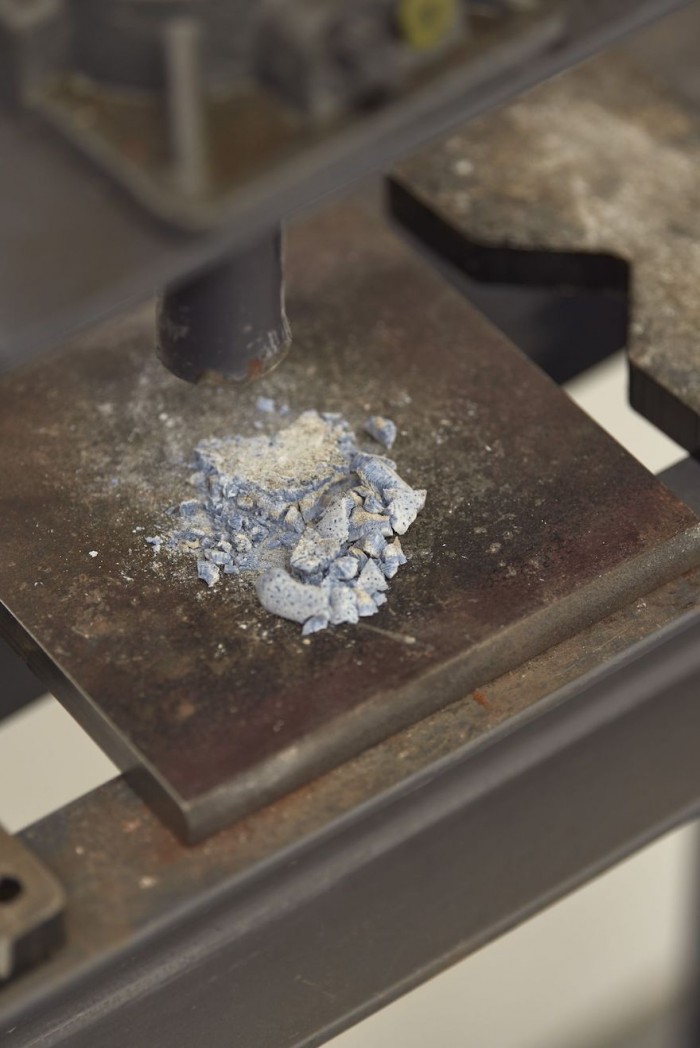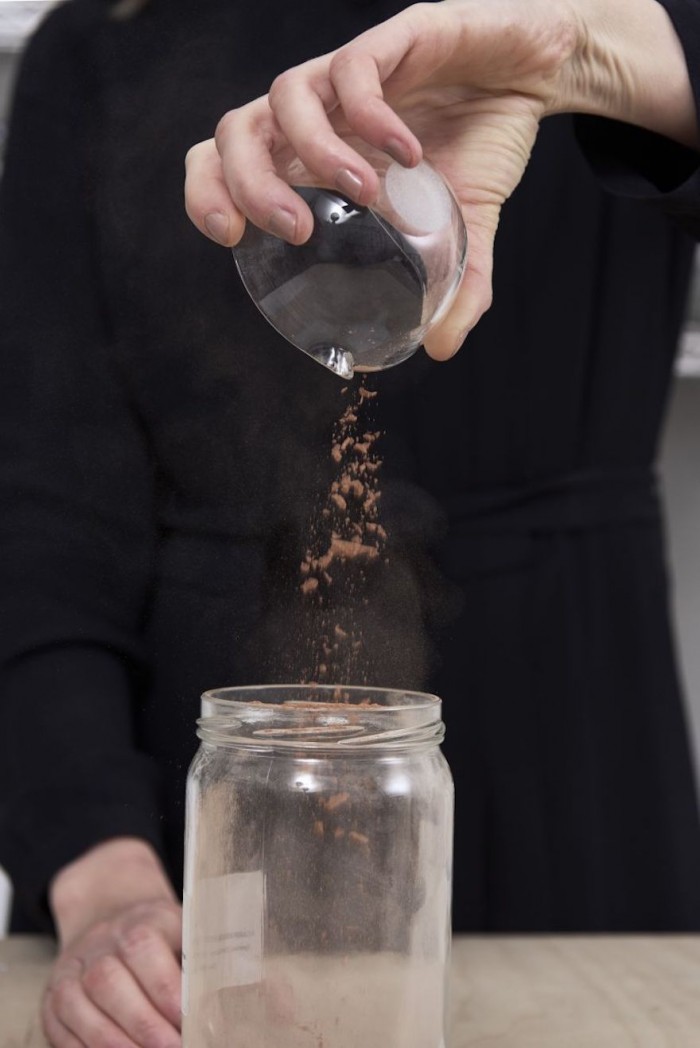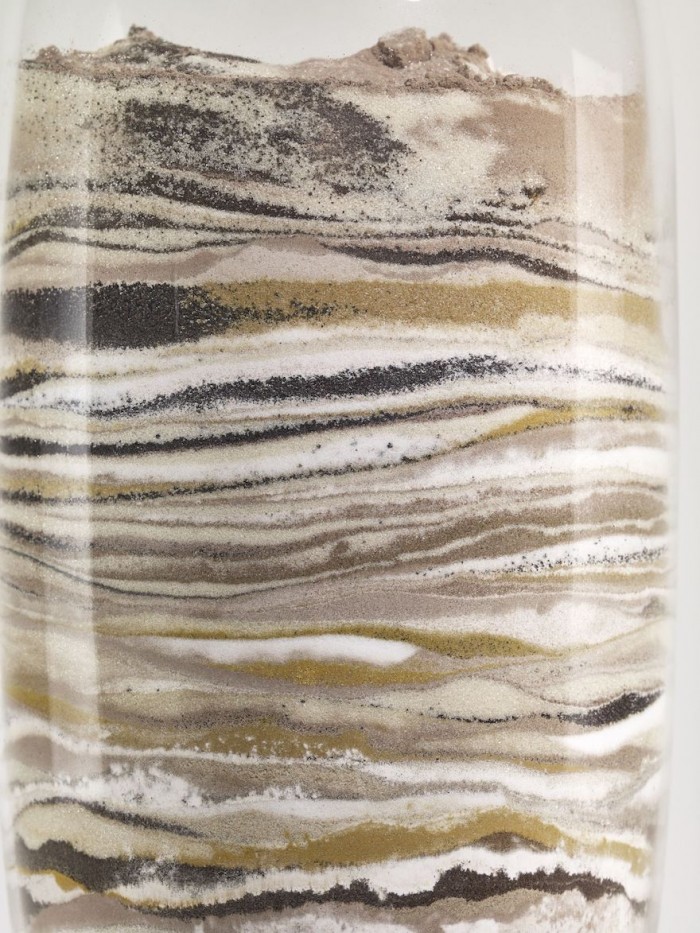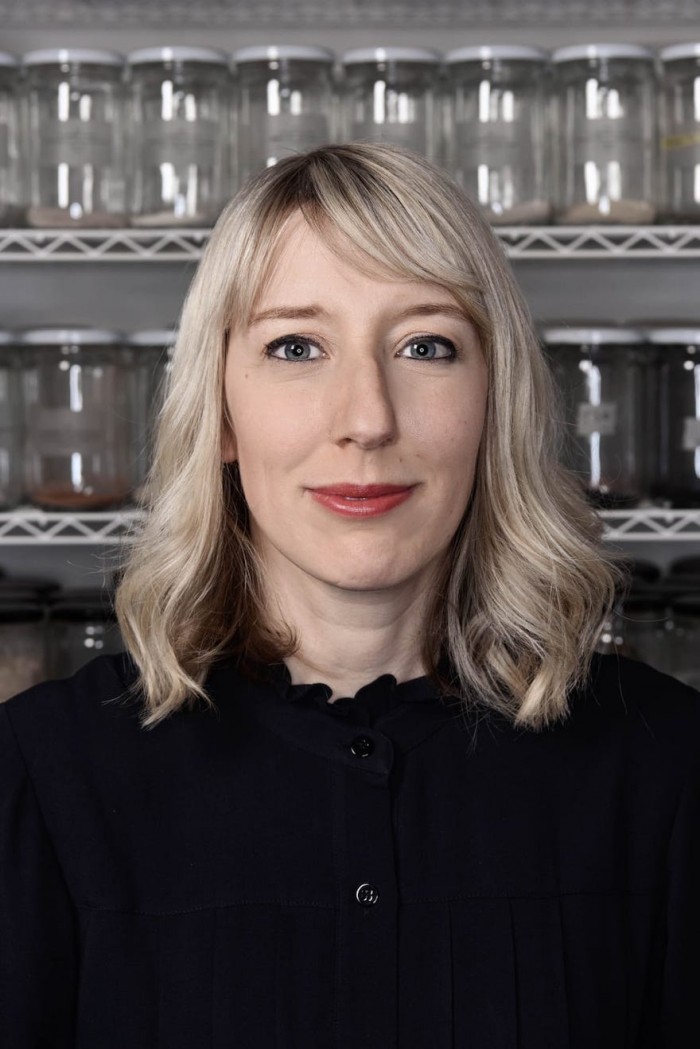Glasgow-born artist Katie Paterson has always made artworks that engage the themes of nature, climate and time – and her most recent project is her most ambitious yet. Paterson has chosen to tell the story of the birth and the life of our planet in a single object, which uses dust gathered from material dating from pre-solar times to those of the present.
The exhibition is anything but static, however, even if it does deal with the remains of aeons of life of our planet. The focus will be on a glass urn in the form of an ancient funerary vessel. This jar, which will stand on a plinth atop a light-filled cube, will slowly be filled with tablespoons of dust from 370 small vials arranged on a long shelf around the walls of the gallery. Intriguingly, each small vial contains 21g of powdered matter – the supposed weight of a human soul – which represents a layer of time.
The dust will be poured into the vase, layer by layer, during the course of the exhibition, which runs from 9 April to 11 June 2022. Invited guests and members of the public will be able to pour the dust into the urn themselves.
The dust has been gathered with the help of the European Space Agency, the Danish Geological Survey and the British Antarctic Survey. The pouring will begin with a layer of pre-solar dust from the oldest of meteorites, carbonaceous chondrite, and the asteroid Vesta. Planetary history will unfold from there, with the oldest earthly rock formation of the 4.5-billion-year-old pre-Cambrian era to the first creatures to open their eyes, the first flowers, the first skeletal structures, and humanity’s antecedents.
Remnants of our archaic ancestors find representation, marking both the birth and extinction of civilisations that have come before ours.
By condensing the birth and life of our planet into an artwork, Paterson is both creator and destroyer herself – crushing to dust some precious objects donated to museums and collections but giving them new form and purpose in her artwork, which can be said to curate time itself.
Included in the vials are trinitite from the first atomic bomb detonation, dead coral from our dying seas, fly ash from burnt fossil fuels, pesticides found in cereal crops and in our bodies, the first chemically synthesised genome, rubble from ruins in war-torn Iraq, regurgitated plastic from the body of a baby albatross, and a polystyrene cup from the depths of the ocean, among other material.
For Paterson, the work is “both celebratory and mystical” but also “the saddest work I’ve ever made, mourning life lost and expressing a dystopian vision”. It is also somewhat political, even confrontational, and it demands that we pay attention to the destruction of civilisations and the crisis of mass extinction. We are the architects of our own demise, the artwork seems to say – but at the same time, there is something ineffably beautiful about condensing so much turbulence into an elegant requiem for the planet.
A publication devoted to this extraordinary engagement will be released in 2022, with individual commentary on each layer by Jan Zalasiewicz (chair of the Anthropocene Working Group).
The glass urn and 370 handmade vials were made by a glass-blowing team at the National Glass Centre in Sunderland, North East England, to which the urn will travel once the exhibition is over.
Read more:
Climate change and performance art.
Morag Myerscough’s #CleanPower installation brightened up COP26.
Credits: James Bennett, John McKenzie and the Ingleby Gallery, Edinburgh









